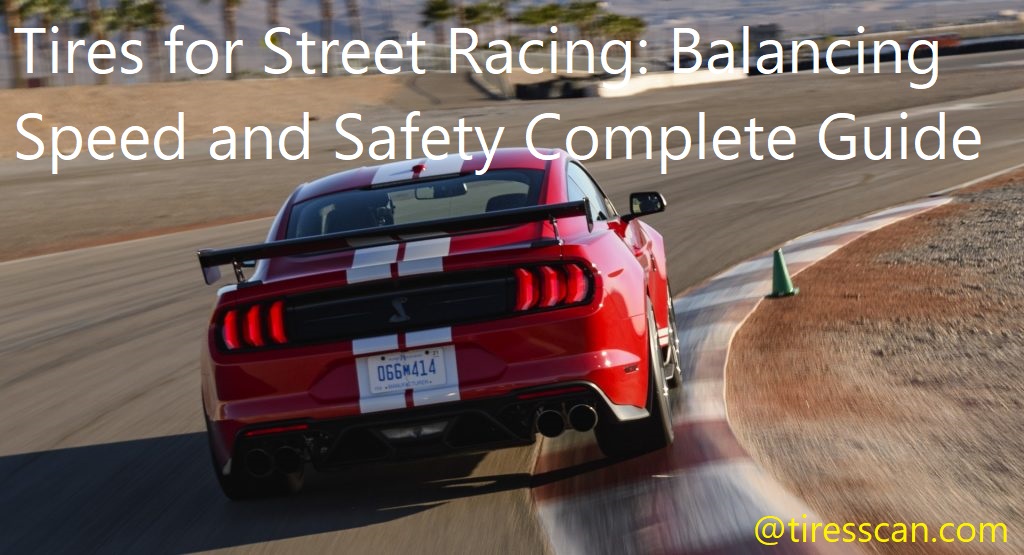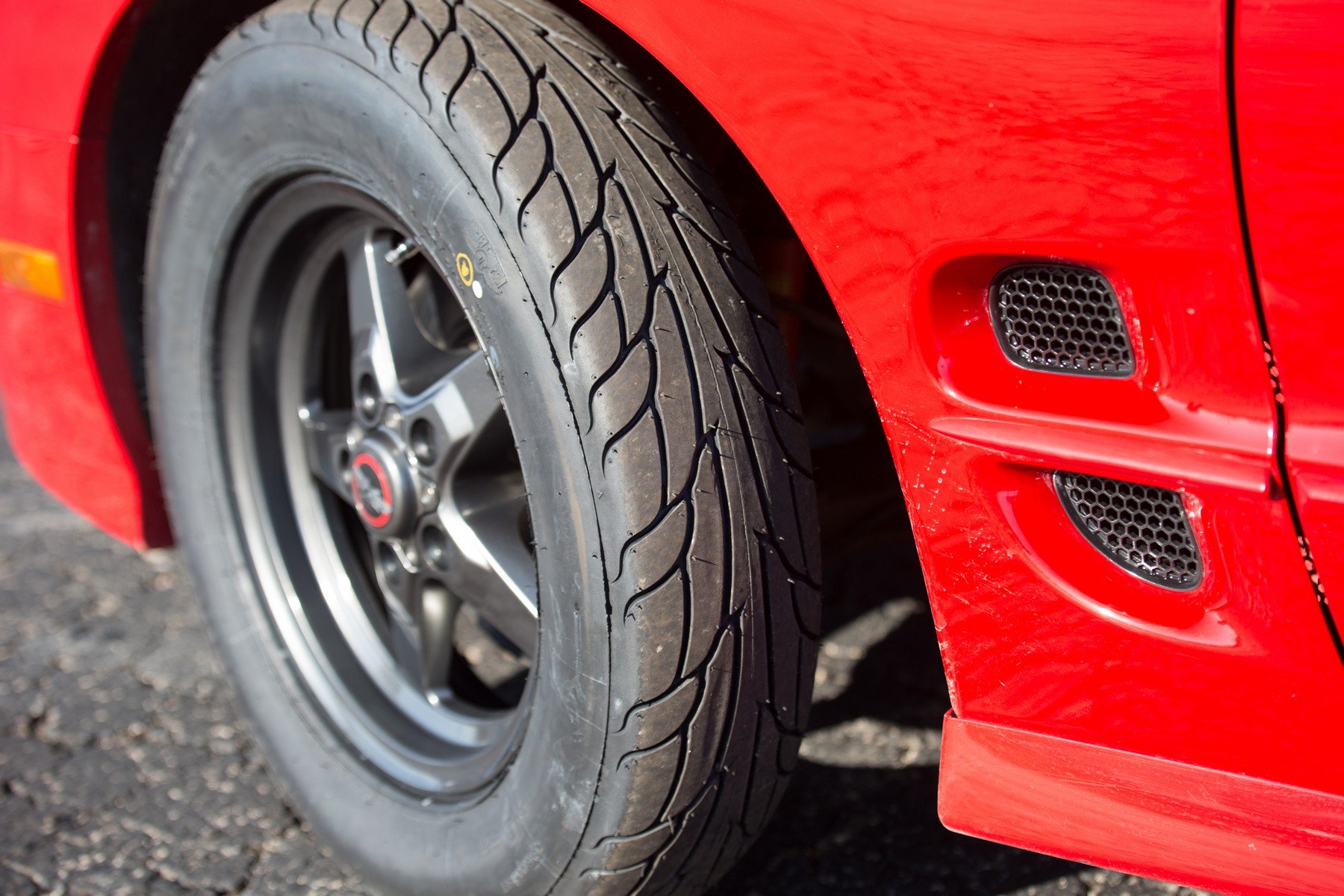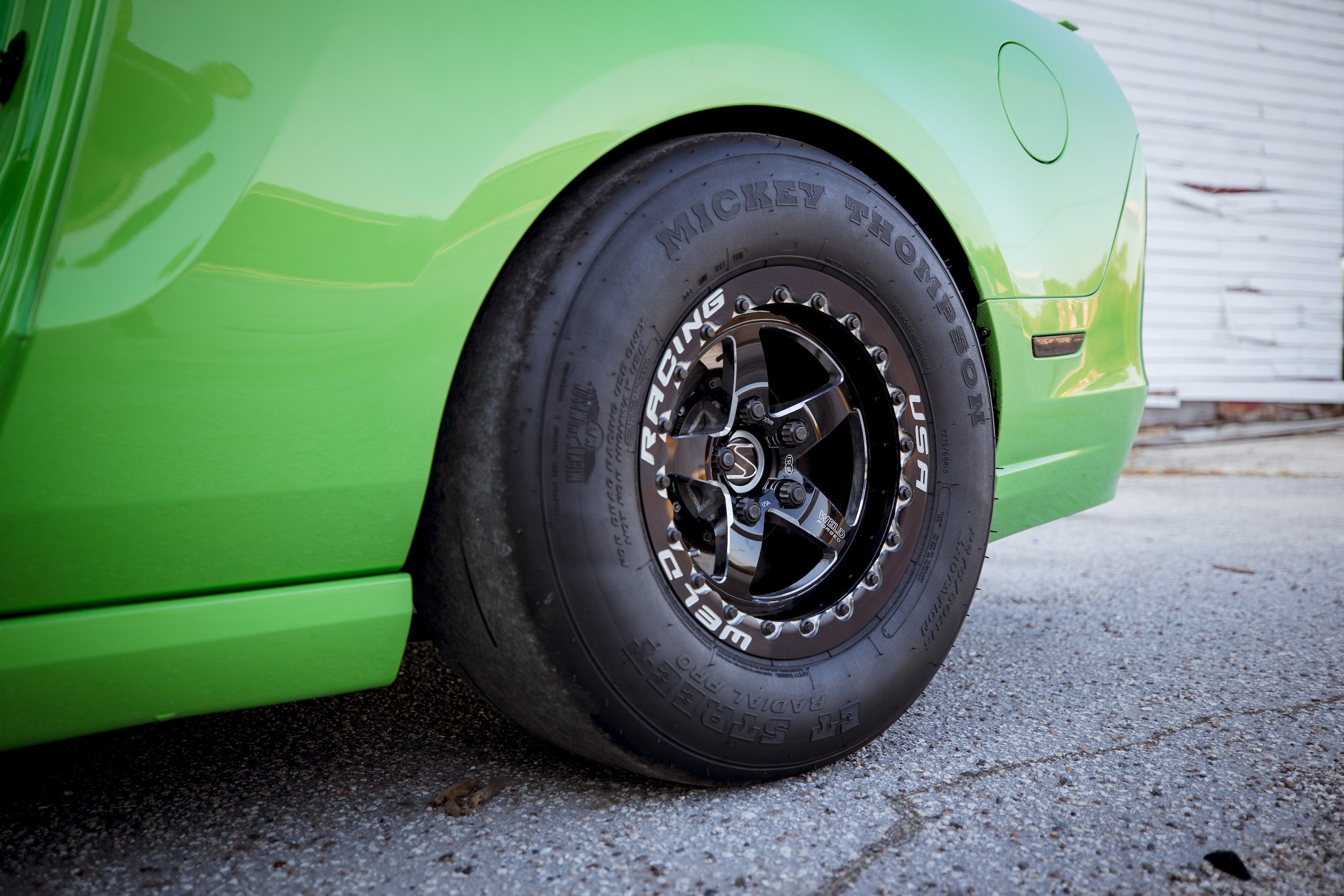Are you looking to maximize your automobile’s performance while ensuring your safety on the roads?
Whether you’re a professional racer or just starting out, this guide will be essential in finding the right tires for street racing. Learn how to balance speed and safety with ease!
When it comes to street racing, two of the most important aspects to consider are speed and safety. Both are critical for optimal performance on the track and in day-to-day driving – so why not make sure your tires provide both? The Complete Guide to Tires for Street Racing will help you understand what types of tires are best for different types of racing and how to select tires that will help you achieve maximum speed while remaining safe.
We’ll discuss the different tire characteristics that make them ideal (or less than ideal) for certain types of racing, as well as how to look out for signs that your current tires are wearing down or no longer providing optimal performance. We’ll also look at trends in tire technology from the major manufacturers and how emerging materials could change the way racers approach choosing tires in the future.
Finally, we’ll explain why getting a proper alignment is essential for keeping your car in top condition during races and on long drives.
Factors to Consider when Choosing Tires for Street Racing
When picking out the right tires for street racing, the choice can seem daunting — you need to balance performance and safety with durability. Here are a few factors to consider when making your selection:
Tread Design: The tread design of a tire will determine how much grip it provides on the road. Street racing tires are optimized for different levels of wet and dry performance, seasonality, and vehicle type. Many people choose tires from well-known manufacturers that have been designed specifically for racing applications.
Durability: Street racing tires must be able to handle accelerated wear and tear because of high speeds and aggressive cornering. The rubber compounds used in these tires should be designed to provide superior endurance — this may also affect other performance characteristics such as traction and handling, but durability is more important than anything else in this instance.
Tire Pressure: Tire pressure can change the entire dynamic of your vehicle–from handling to acceleration – so it’s important to get it right when selecting tires for street racing. As a general rule of thumb, higher tire pressures allow you to corner more quickly at cost of some traction, while lower pressures offer extra grip when accelerating or braking but will slow turning down slightly. Ongoing testing will help you find an ideal pressure setting for your particular setup — just make sure not to overdo it!
Speed Rating: Speed ratings measure a tire’s maximum speed capability (measured in kilometers per hour). It’s best practice to select a tire with an appropriate rating focusing on your average speed rather than maximum potential speeds — if they tire is rated too high then its ability to generate heat will be reduced leading potential issues with grip and longevity. It’s always best practice not to exceed the recommended speed rating regardless of what type of tire is being used on the vehicle.

Tread pattern
The tread pattern is the design carved into the outer rubber of a tire. The purpose of this pattern is to provide traction and grip on a variety of surfaces. It’s important to consider the tread pattern when choosing street racing tires, as tread depth and type can have a major effect on speed, cornering and braking performance.
There are three main types of tread patterns for street racing — asymmetrical, directional and symmetrical. Asymmetrical tires feature different serrations on the inner and outer edges of the tire for improved steering control and cornering stability. Directional tires have angled grooves in one direction for increased straight-line velocity but reduced cornering grip. Symmetrical designs have evenly spaced grooves throughout the tire, making them well-rounded but equally suited to all conditions.
When selecting a tread pattern for your street racing needs, it’s important to consider where you will be driving most frequently. For example, if you plan on doing more circuit or track races, then asymmetrical and directional tires may be better suited for high speeds due to their low rolling resistance; however, if you primarily race in urban areas with more unpredictable surfaces then symmetrical designs with deeper grooves may provide greater traction and protection from potential damage to your vehicle.
Tire compound
The tire compound is one of the most important aspects to consider when choosing tires for street racing. Tire compounds affect grip, handling, and heat management and each compound offers varying benefits. Tire compounds are rated on a range from soft to hard, with soft compounds providing more grip and better overall handling but lacking in durability and heat management compared to harder compounds. The right compound for your specific driving needs will depend on the conditions of the track, car model and performance expectations.
Consider these factors when evaluating various tire compound options:
Soft Compound: Provides maximum grip with difficultly in generating heat. Best used on dry surfaces at higher speeds in stock or lightly modified cars.
Medium Compound: A good all-around option for performance driving with improved wear characteristics relative to soft compound tires.
Hard Compound: Best used for extended periods of time under heavy acceleration in heavily modified race cars. This compound provides more stability than its softer counterparts but less overall grip and responsiveness.
Size and width
When choosing tires for street racing, size and width are important considerations. To maximize speed and minimize slippage, select tires with a narrow profile — the width and circumference of the tire affects the amount of contact it makes while driving on the road, which can have an effect on the grip and stability of your vehicle.
Choose smaller tire sizes that are optimized for cornering performance. Smaller tires help maintain better contact with higher traction surfaces, helping ensure faster acceleration times and superior control during cornering. Additionally, narrower tires will help maintain a lower center of gravity during acceleration or deceleration.
To meet safety regulations, choose wider tire sizes – wider tire sizes provide more stability, offering better braking performance and greater control in wet conditions. Tyres wider than 25mm are legally defined as ‘Wide Base Tires.’ Wider tyres may reduce top speeds slightly but will improve braking power when compared to narrower tyres by providing additional contact patches to disperse heat during braking or cornering maneuvers.

Load index and speed rating
For street racing, it is important to find the right balance between speed and safety. When selecting tires for street racing, it is important to take into account the load index and speed rating of the tire. The load index directly affects the weight that can be safely carried by the tire. A higher load index number indicates that the tire can carry more weight compared to a lower numbered load index. The speed rating indicates the maximum speed at which a tire can handle while still maintaining proper grip on the surface of the road.
Knowing these two ratings is critical when choosing tires because they are directly related to how your car will perform while on the track.
The load index and speed rating can be found on each individual tire and is expressed in a combination of letters and numbers unique to each manufacturer. For example, an “LT” followed by a number (LT123) represents an LT-rated tire with Load Index 123, which would indicate a safe weight of 2,028 pounds for this particular tire at maximum inflation pressure. A “V” rating followed by a number (V123) represents V-rated tires with a Speed Rating of 123 mph or higher—the highest possible speeds for this type of model or size tire.
Choosing the correct combination of load index and speed rating for your street racing needs will ensure you have both speed and safety performance when out on course –- giving you confidence in running fast laps without compromising safety on the track.
Balancing Speed and Safety
When choosing tires for street racing, you must balance speed and safety. This section of the guide will explore the factors you must consider while making your selection in order to achieve the optimal combination of performance and reliability.
Tires are one of the most important components when it comes to optimizing a street racing car’s performance, as they directly affect cornering ability, acceleration, braking, and stability. In order for tires to function at peak performance levels and highest efficiency, it is essential that their design and construction be tailored precisely for your driving situation and personal preferences.
The first aspect of selecting tires for street racing involves selecting the type that best suits your personal goals and preferences when it comes to a balance between speed and safety. There are several different types available on the market today including ultra-high performance (UHP), competition, all-season touring (AST)and all-terrain (AT) tires. Each type offers its own unique set of benefits based on its design characteristics; however UHP tires generally offer greater levels of speed capabilities than AST or AT categories due to their lower rolling resistance and reduced tread depth which helps them better grip the asphalt surface during races.
The second factor when selecting tires involves researching various tire brands available on the market. Different brands vary in material content, construction methods, rubber compound, size selection etc., which will all ultimately impact overall wear rates as well as handling capabilities while driving on streets or race tracks with varying degrees of traction conditions such as asphalt or concrete surfaces with rain or shine weather conditions. It is imperative that you assess your needs concerning aspects such as torque power delivery acceleration/deceleration inputs for different turns/braking situations before finalizing your choice of tire brand type in order to optimize both speed AND safety during street races; this will also ensure you get good value for money purchase since higher quality designs generally last longer than cheaper models should you be using them regularly in competitions over time.
The importance of balancing speed and safety
When it comes to street racing, the most important factor to consider is the balance between speed and safety. There is no greater danger on the road than an irresponsible driver who refuses to take necessary precautions when performing a burnout or engaging in drag racing. It is vital that drivers recognize the importance of balancing speed and safety when driving on public roads.
The first step in maintaining this balance is choosing tires that fit your vehicle’s needs. The right set of tires will provide both performance and safety for your racing endeavors. When selecting a set of tires designed for street racing, there are several important factors to consider. For instance, different tire models come with different loading capacities; choose a model that provides sufficient load capacity for the conditions you intend to drive in. You should also pay attention to traction characteristics such as compound type, thread pattern, and volume. All these factors combine together to determine how grippy your tires will be depending on your intended usage, so make sure you select a model with features tailored to your needs.
In addition, there are other essential components which need to be taken into consideration when optimizing for speed and safety on public roads. Regularly maintained brakes are crucial for keeping you safe in any situation; replacing brake pads once a year or as needed will help improve both stopping distances and control over your car under aggressive maneuvering situations. Make sure you never race without making sure your brakes are up-to-date; if they don’t pass inspection standards then it’s time for new pads or even an entire brake system overhaul!
By taking these measures into consideration before embarking on any kind of roadway competition, drivers can ensure they have done everything in their power to maximize performance while still abiding by safety regulations and minimizing risk during their time out on the roadways.
Tips for achieving the right balance
If you want to win a street race, safety has to come first. Apart from the basic safety requirements like helmets, leather jackets, gloves and other protective gear, it’s important to have a good set of tires. The right tires can make the difference between victory and defeat, so here are some tips for achieving the right balance between speed and safety when choosing tires for street racing.
Tire Selection – It’s important to choose a tire that will provide you with optimum performance without compromising on safety. All-season touring tires are an excellent option for those who want safe handling in wet conditions and good grip on dry surfaces. Performance tires offer improved traction in both dry and wet conditions and are suitable for light racing applications or dry climbs. High performance summer tires provide good grip on dry roads but tend to become unreliable in wet weather. For ultimate performance, racing slicks are the best choice but they will often wear out quickly under heavy-duty use.
Tire Pressure – The proper tire pressure is essential in order to ensure optimal handling characteristics while also retaining enough contact with the road surface while cornering at high speeds or navigating tight corners. Always consult your vehicle manufacturer’s recommendation regarding recommended tire pressure levels based on the specific vehicle model; overinflating or underinflating can have disastrous results when it comes to cornering at high speeds or sudden braking maneuvers which could lead to accidents as well as creating dangerous grainy surfaces which could lead you off track when taking sharp turns.
Tire Temperature – Proper Tire temperature helps maintain cohesion between rubber molecules which enhances grip for taking sharp turns without losing control of your vehicle; this entails inspecting your vehicle’s brakes before every race in order to verify their overall temperature because if the brakes go beyond their recommended operating temperature this can cause warping leading towards excessive wear on treads resulting in unpredictable behavior when maneuvering tight corners at high speeds due brake failure.

Conclusion
In conclusion, when selecting tires for street racing, it is important to consider both speed and safety. It is possible to find tires that deliver a balance of both; they may cost more than other types, but the cost is well worth it. There are also several techniques that can be used to improve tire performance, such as rotating them regularly and maintaining proper inflation levels.
Taking the time to research and consider the various options available when it comes to tire selection will not only provide the best performance for a vehicle, but it also helps ensure safety. Ultimately, choosing tires that fit your driving style and budget can help improve your street racing experience while keeping you safe on the roads.
FAQs
What size tire is best for street racing?
The size of tire that’s best for street racing depends on several factors such as the type of vehicle and the type of racing.
Can you use racing tires on the street?
Racing tires are not designed for street use as they have limited tread life, poor wet weather performance, and reduced grip in cold temperatures.
What is the best tire for track racing?
The best tire for track racing is a high-performance tire that provides maximum grip and handling, and is specifically designed for track use.
Do you balance racing tires?
Yes, racing tires need to be balanced to ensure that they perform at their best and provide maximum grip and handling.
What is the biggest street legal tire you can run?
The biggest street legal tire size varies depending on the make and model of the vehicle, and the laws in your country or state.
What are street racing tires called?
Street racing tires are often called high-performance tires or racing-inspired tires.
What speeds can street racers go?
Street racing is illegal and dangerous, and there are no limits on how fast street racers can go, which is one of the reasons why it’s so dangerous.
Why are racing tires not street legal?
Racing tires are not street legal because they are designed for racing and not for regular street use, and they can be dangerous on public roads.
What’s the difference between racing tires and regular tires?
Racing tires are designed to provide maximum grip and handling at high speeds on the track, while regular tires are designed for daily driving and provide a balance of performance, comfort, and durability.
Do street racers use traction control?
Some street racers may use traction control to help improve their grip and handling on the road, but it is not common in illegal street racing.
See Also:
- Best Tires For Nissan Altima
- Best Tires For Street Racing
- Best Tires for a Quiet Ride
- Best Tires For Fj Cruiser
- Best Tires For Dodge Charger

